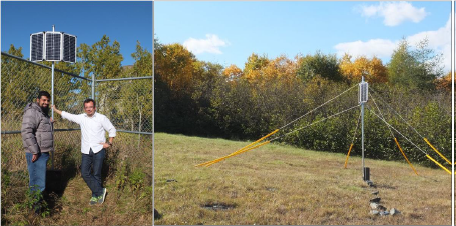 Information about the water contained in snow and its properties is of vital importance to multiple sectors. Whether for hydropower, for flood and avalanche warnings, or for general water resource management – this information holds the key to some fairly critical forecasting. Now a new service is taking the snow community by storm…
Information about the water contained in snow and its properties is of vital importance to multiple sectors. Whether for hydropower, for flood and avalanche warnings, or for general water resource management – this information holds the key to some fairly critical forecasting. Now a new service is taking the snow community by storm…
SnowSense is a Snow and Runoff Information Service created by Munich-based VISTA Remote Sensing in Geosciences GmbH, with the support of ESA’s Business Applications Programme.

The solution, initially designed to help hydrologists working in remote and seasonally inaccessible areas with limited infrastructure or communication, integrates three space assets: Earth Observation, Global Navigation Systems and Satellite Communication.
“With SnowSense all three space components demonstrate their excellent potential for solving specific users’ needs for snow monitoring.” Olivier Becu, ESA
SnowSense provides information on snow cover and the resulting hydrological dynamics, such as snow melt and run-off formation – dynamics which are extremely useful for those in charge of the reliable and safe production of hydropower and flood management.
“Snow represents both risk and potential; we are dealing with climate change and flooding…but snow is also energy, irrigation and food security. This the most important topic we’re working on.” Florian Appel, Head of Hydrological Services, VISTA
Snow is traditionally measured in terms of height, but this is of limited use to hydrologists as fresh snow is very light and over time it becomes compressed. The usefulinformation is what’s inside the snow cover and ultimately what will melt at the end of the season.
“The water stored in snow cover is known as the Snow Water Equivalent (SWE) and it’s the most relevant parameter,” explains Amir Ali Khan, Manager at the Water Resources Management Division of the Government of Newfoundland and Labrador, Canada, where the SnowSense demonstration took place. “The SWE is currently only measurable by using costly automatic stations or getting out in the field with snow mobiles or helicopters. In remote areas we often simply cannot obtain this information.”
SnowSense fills a gap in current services by providing spatial and temporal data in high resolution through the application of Earth Observation and modelling. This allows for the creation of spatial SWE maps of regions as well as giving run-off information at specific points of interest for real-time purposes and forecasts.
“One of the key elements in this project is the use of a novel in-situ hardware component,” says Olivier Becu. “Based on GNSS signals, snow properties can be retrieved by an autonomous, easy installable, maintenance-free and low-cost design sensor.”
The utility of the service spans many more fields than hydrology with a broad appeal for governmental and research institutes/universities (weather services, snow physics, avalanches) as well as private and commercial applications. There are also possible applications in areas such as logistics, transport and insurance.
“User needs and requirements may differ from the standard SnowSense service, but a synergistic use of the in-situ hardware and the service we’ve developed would be possible,” says Florian Appel, Head of Hydrological Services at VISTA.
Users and customers for SnowSense are primarily located in North America and Scandinavia, but also in all countries with significant snow cover and dynamics (more than 40 worldwide).
“Under ESA’s Business Applications programme we have carried out successful demonstrations, patented the technology and installed hardware on the island of Newfoundland and in Quebec, with snow stations now operational in Germany and Switzerland. There is widespread interest for this service among the snow community – in fact we had sales and contracts established before the end of the project,” adds Appel.
With the first devices now sold in Europe and orders from key customers on the way, VISTA are now having discussions to establish a development partnership for the next-generation SnowSense Sensors.


